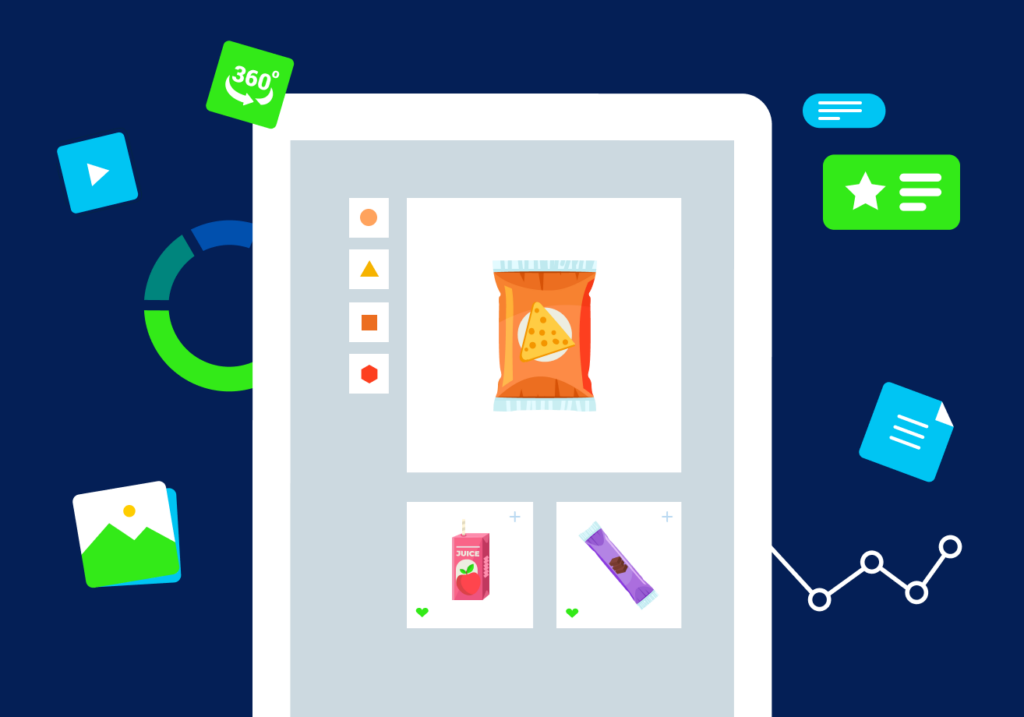Earlier this summer, The International Foodservice Distributors Association (IFDA) hosted one of the first in-person industry events since Q1 2020. The annual event, IFDA’s Sales & Marketing (SMart) Conference, hosts companies from distribution and manufacturing communities in foodservice, bringing together leaders from across the country to explore the state of industry, showcase thought leadership, and promote collaboration to improve the supply chain.
This year, I took the stage with fellow industry veteran and Syndigo SVP of Product, Anthony Marshall, to talk about how foodservice leaders should be thinking about eCommerce and leveraging data, especially post pandemic. In my time at Syndigo, I’ve gotten a clear lens into how retail approaches eCommerce and the way that data is exchanged between retailer and brand owner. So I thought, let’s show foodservice how retail is blowing away online shoppers. I knew Anthony would be exactly the right person to cover this with, as he comes with 20 years of experience in the CPG world at Kraft-Heinz, driving eCommerce and category leadership initiatives.
For those of you who weren’t able to attend this year’s IFDA SMart Conference, here’s a recap of what we shared on behalf of Syndigo.
Foodservice and retail/CPG are not that different anymore
Even before the world was shaken by COVID-19, we were seeing these two industries begin to take similar forms. It was the core of my presentation at the virtual IFDA SMart in 2020, where we unpacked the behavioral changes occurring in foodservice as traditional consumers began to reshape the way they shopped for, and ultimately consumed, their meals.
My thesis was: Foodservice is already in flux, which means the industry is prepared for this kind of shift in consumer behavior. I said on Zoom that day, “Foodservice is getting a violent shove into a virtual marketplace.” A few statistics I included were:
- 60% of food was being consumed off premise
- 90% of consumers were using drive-thru or pick up
- 53% of consumers were using third-party apps to get food delivered
- 34% lift in food away from establishment (compared to previous year)
For decades, retail grocery out-sold foodservice. If you look back to the early 90s, consumers spent nearly 30% more with a grocery store than a restaurant. By the time 2014 came around, there was no gap, and going into 2019, going out to restaurants had surpassed shopping at grocery stores (not by much, but it was happening).
Why was consumer behavior shifting? Younger generations, often Millennials, who tend to seek convenience, more information, and consumer-backed endorsements to guide their purchase decisions. This is where Anthony came into our presentation and told a story of a friend of his, a mother of two, who after picking up a week’s worth of groceries at the end of her work day, flew by the ‘take-n-make’ section to grab a meal kit for that evening. Why? So she could quickly assemble something for her family and maximize time with them, rather than having to spend the rest of her evening toiling away in the kitchen.
It’s easy to see that Millennials have been steering generations, both ahead and behind them, to embrace an on-demand shopping experience (which has translated to improved online shopping experiences).
Retail, meet foodservice
As the foodservice supply chain shut down in February & March of 2020, retail was back on top of consumer spending. Manufacturers were having to quickly figure out how to move products that were traditionally reserved for foodservice through a different supply chain.
Meanwhile, Anthony shared that he had already been buying bulk-packs of Kraft products for years, simply because they were available to him. Think big packages of Kraft singles, but instead of the 20 slices you might find in the cheese section of the dairy aisle, he was getting the kind a restaurant might buy, with 120 slices per pack. Maybe the average household wasn’t ready for 120 slices of cheese, but what about individual portion-controlled condiments? A.k.a. those tiny packets of ketchup, mustard, and mayo that you might find at a service counter or in your to-go bag from a restaurant. Why wouldn’t parents want to have those for kids’ lunches? Or maybe an office employee who takes their lunch to work and doesn’t want the sandwich they made to be soggy by mid-afternoon.
Well, that came to fruition! Mixed packs of portion-controlled condiments are now available in retail packs—and they sell like crazy. It turns out consumers were not afraid of bulk-packed anything. They’ve been buying from big-box retailers for years, so why not take advantage of convenient packaging, like these smaller condiments that one could usually only find by ordering from a broadline distributor?
Foodservice isn’t just about selling to businesses—it’s selling to people
Now with proliferation of grocery delivery, the ability for a manufacturer to discern foodservice from retail has become challenging. This sudden shift in consumer behavior—or what I described last year as a “violent shove” into the virtual marketplace—has changed the way retail and foodservice companies think about how they present their products to people throughout all channels, especially online.
It turns out, these are often the same people who go to work at hotels, hospitals, and restaurants to order products for their customers. According to Cleveland Research, more than 77% of foodservice operators are buying at least some of their products online. Brands must drive this visibility and relevance of their products across all digital touchpoints by optimizing how they create, manage, and deliver their content experience—all with the end goal to increase conversions and drive market share.










